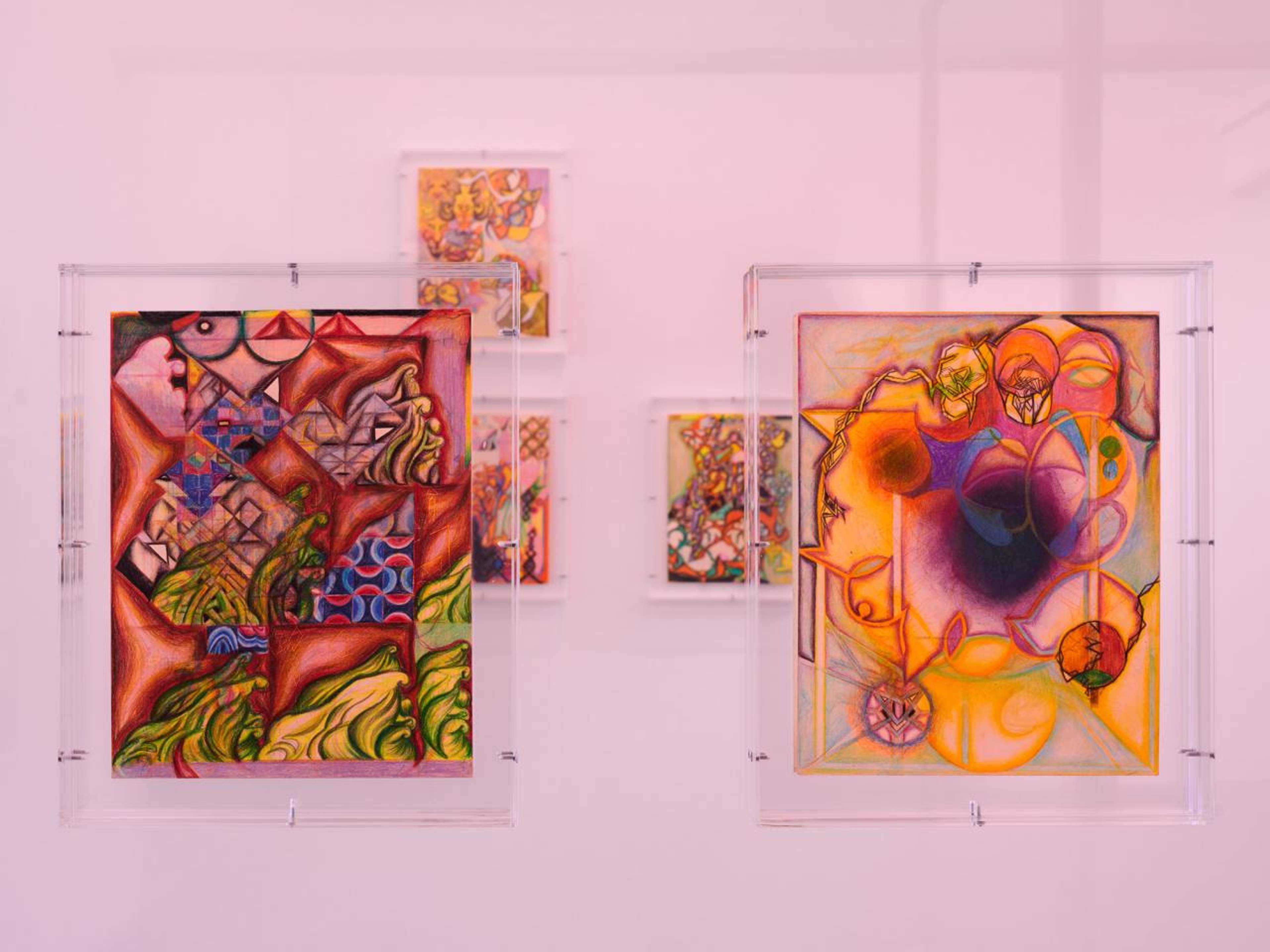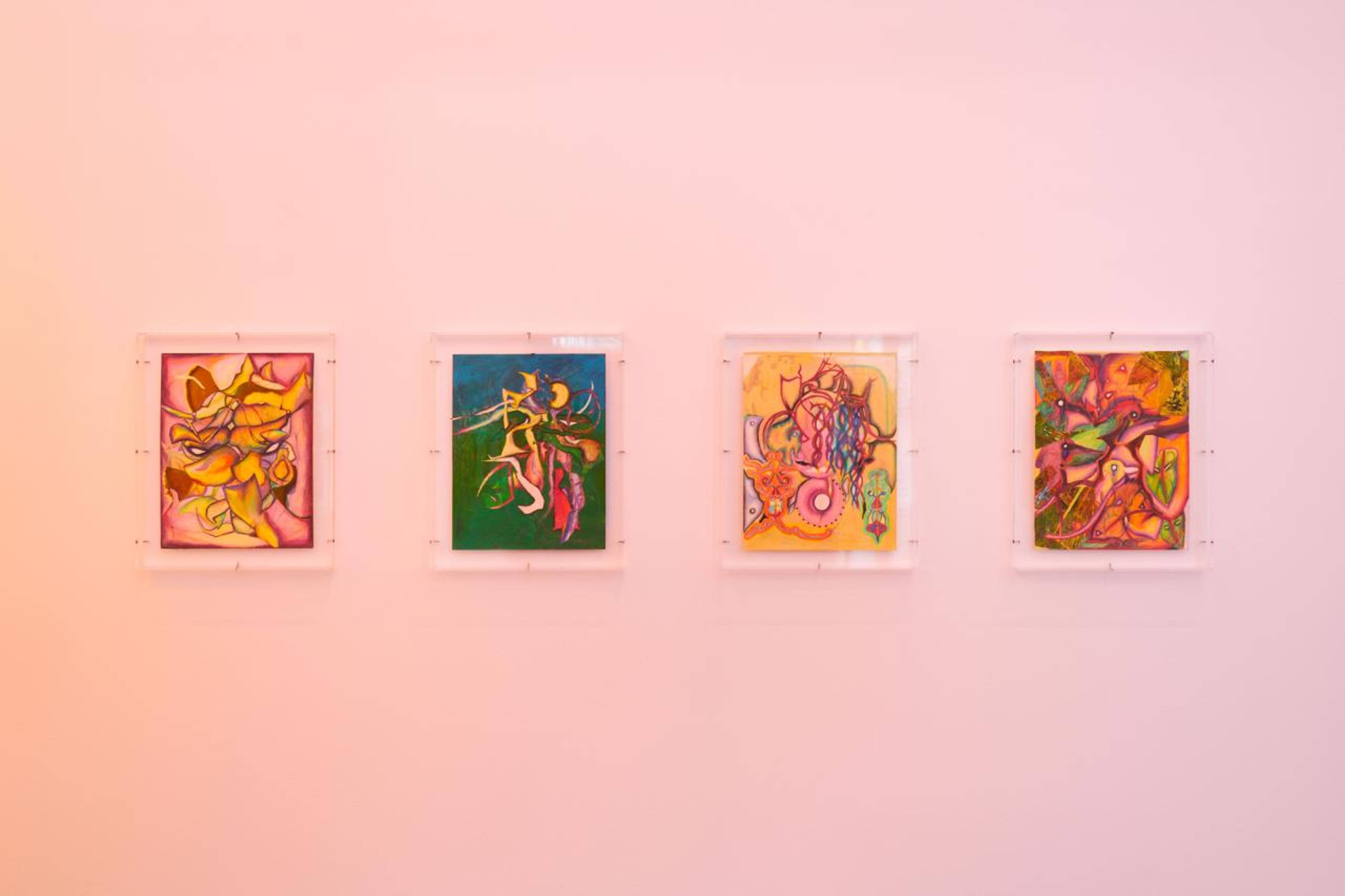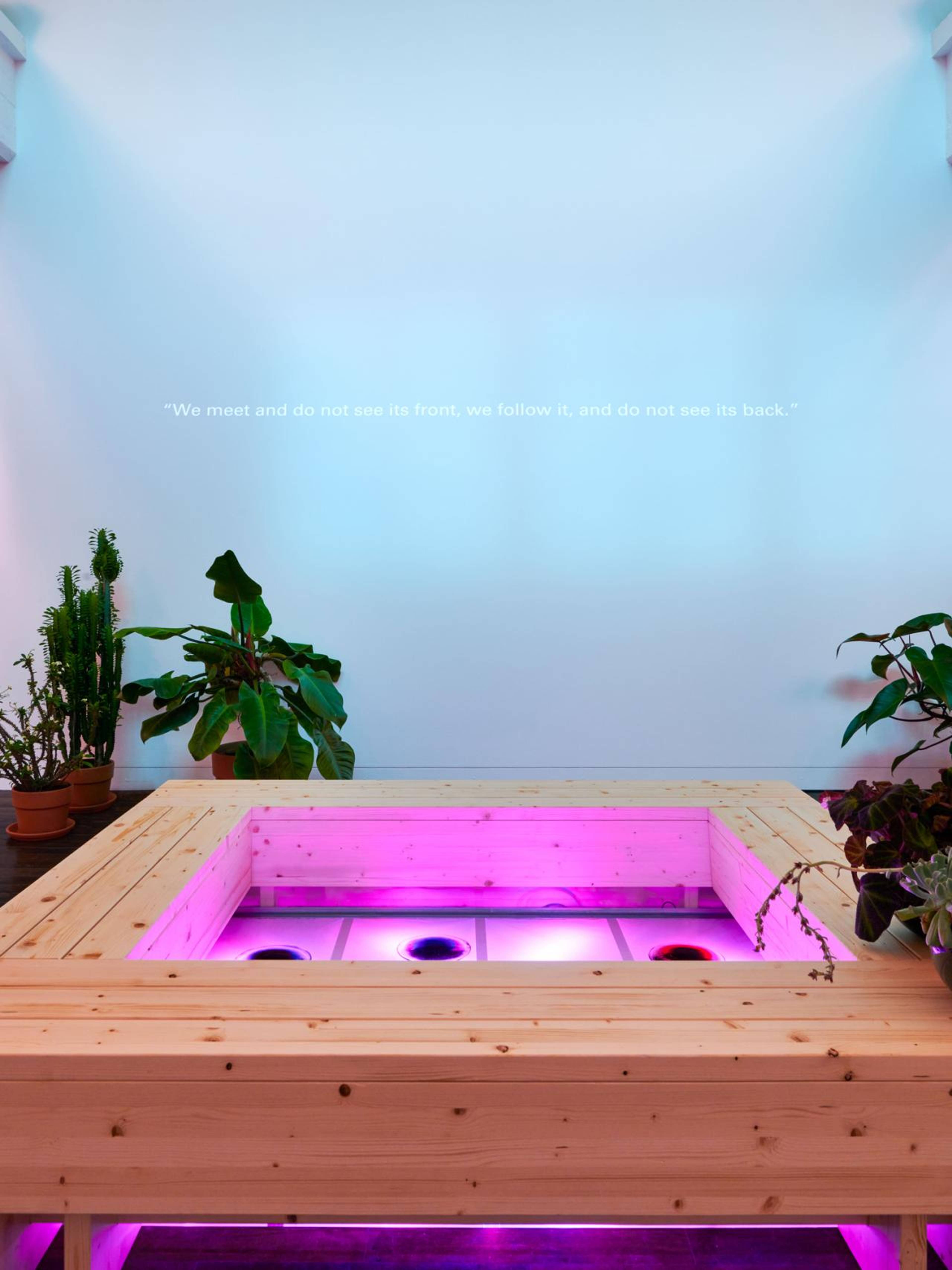The Hamburg-born artist Kerstin Brätsch subscribed to the Invisible College, a community on Zoom founded by poet and playwright Ariana Reines, from New York City in early 2020, where moving through, working in, and activating the collaborations central to her practice became difficult or outright impossible. Back then, the group focused on reading and discussing the stories and hymns in Inanna: Queen of Heaven and Earth (1983), a collection of ancient texts about the Sumerian goddess translated, annotated, and retold by Diane Wolkstein and Samuel Noah Kramer. As she was in the course, Brätsch worked on a series of drawings with readily available materials during quarantine – colored pencil, graphite, and paper – that, two years later, would come to constitute the “Para Psychics” (2020–22), now on display at the Ludwig Forum in a show curated by Eva Birkenstock.
The artist conceptually framed the one-hundred drawing opus with an analogy to the tarot, the widely known deck of playing cards whose variants are of opaque origins and whose divinatory use gradually asserted itself in Europe during the 18th century. Brätsch is skeptical toward the canonical, teleological allegory of the “heroic journey” – a patriarchal legacy – in which major and minor arcana are expected to reveal the adversities and advantages of one’s life trajectory, preferring to consider the representations as sharing equal status. Her forms do not respond to a hierarchy of figurations or perspectives – unlike traditional tarot – or, in some cases, a “correct” verse. Evoking the abstractions of Emma Kunz or Hilma af Klint, the uniformly sized paper sheets indicate dense scenarios in which geometric patterns intersect silhouettes that recall brambles, human bodies, inflorescences, ancient divinities, semi-anthropomorphic creatures, and archaeological finds. Their surfaces display grooves, depths, cuts, and glued portions that manifest the generating, material process as portions of the work itself. “It was like a constant transitioning out of me, always transforming into the next, into the next, always unfolding, collapsing, unfolding, collapsing,” Brätsch told the curator Zoé Stillpass in the artist’s book accompanying the exhibition. This evoked state of dispersion-in-continuity has a visual counterpart in the recurrence of remodeled and reshaped forms, as well as the progressions of chromatic patterns and techniques from one work to the next, in what appears to be a process of seamless osmosis.
Inanna (who was also called Ishtar by the Semitic peoples of Mesopotamia) has a complex and copiously debated profile, not least because of the fragmentary nature of primary sources about the goddess and the relative youth of Sumerian studies as a field of scholarship. As patron of Uruk, which was the most populous city in the world during Early the Bronze Age, Inanna oversaw justice, love, and play – the last, a category that, at the time, included battle. The first among the Sumerian deities to descend into the land of the dead and to emerge alive – perhaps a fitting echo of the artist’s own isolation during the pandemic – she is also distinguished by the mercuriality of her behavior and the complexity of her attributes; the Assyriologist Rivkah Harris called her “a paradox,” writing that “she embodied within herself polarities and contraries, and thereby she transcended them.”
The attributes of the goddess probably amount to a guide through the exhibition in Aachen: The push toward such a founding and elusive historical center of gravity, the idea of initiation and rebirth, and the projection through the future of divinatory practices are vectors that do not lead to any conciliatory solution. The dense, dreamlike landscapes are not allegories that produce a narrative, but together form an ineloquent self-contained world. What matters is the challenge to the hierarchical gaze, to a verbally transferable “meaning,” to polarizations between process and artwork, spontaneity and intention, abstraction and figuration, the individual and the serial, and arts and crafts. “Die Sein” is an exhibition set up to induce circular wanderings among works collected in small groups, in search of assonances scattered among different environments – including a corner where one can sit near a fountain surrounded by plants and listen to a slow, meditative composition by Wibke Tiarks. It feels like the “being there” that partially lends the exhibition its title – distorting the well-known Heideggerian concept of “Dasein” in a womanly and individuating key, “die” being the German feminine determinative article – likewise reflects the one hundred works’ long, simultaneous productions and the experience of visitors shuffling the cards before the journey begins.
___
“Die Sein: Para Psychics”
Ludwig Forum
24 Sep 2022 – 26 Feb 2023






